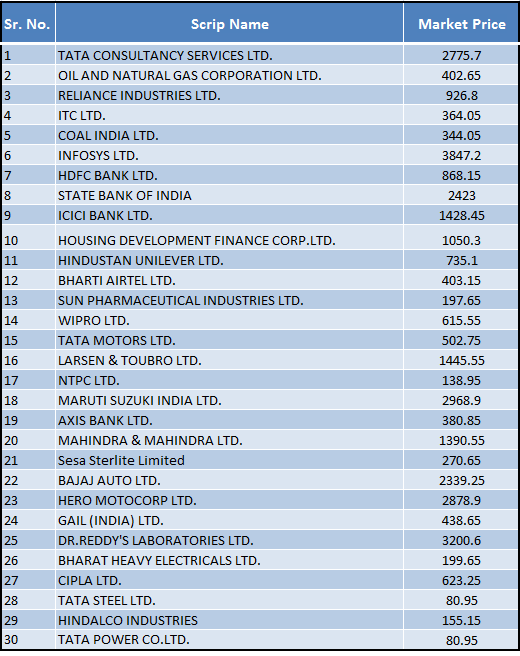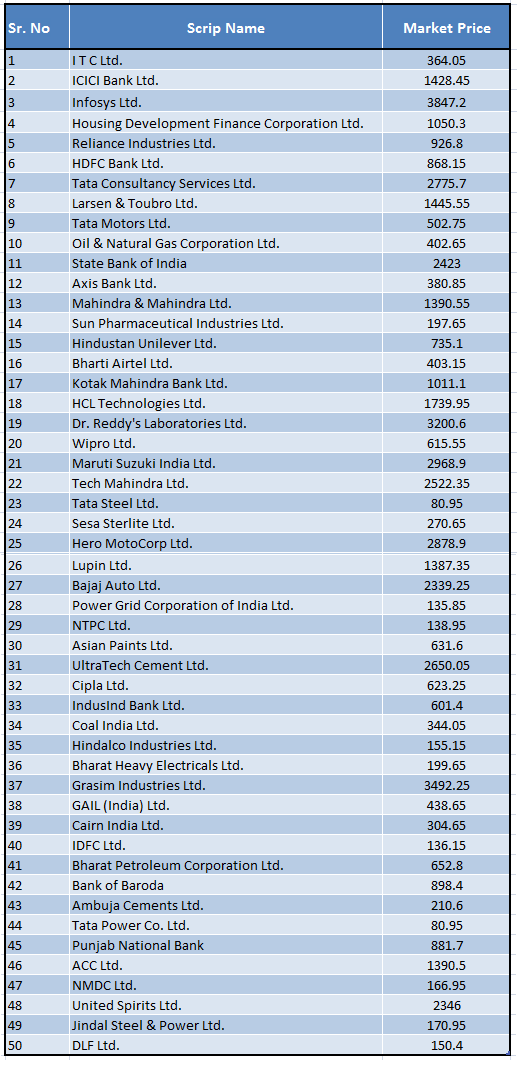- October 3, 2014
- by Prakash Lohana
- Articles
- 3mins read
- 539 Views
- 0 Comments
In last few months, I have been hearing investors saying that markets are at peak so it cannot go up now, actually investors are not able to understand “what is a stock Index?” how it is constructed and how it moves up or down? I will try to explain you these basic aspects of stock index and connect with your investment decisions.
What is Stock Index?
An index is a statistical measure of the changes in a portfolio of stocks representing a portion of the overall market. To simplify, suppose there are 100 companies in a exchange and you want to track the overall performance of those 100 companies than you can create an index of those companies which starts with a certain base value and the movement of this base value gives you idea about overall performance of these companies.
Example of stock Index
For example, if we want to track changes in the values of company A, company B, company C and company D. For this we can construct an Index called Index ABCD as under.
Table 1

In above chart you can see that all four companies have different prices and have 1000 shares outstanding. So market capitalization (Market Capitalization= Total outstanding shares x market price of the share) is the total market value of the company. Now index will start from 100(Base of the Index is taken at 100). For example as shown in below table 2, on day one prices change as under and prices of company A, B and C goes up but prices of company D falls by 10%. So in totality index falls by 1% and becomes 99 from 100 because impact on total value of market capitalization is -1%.
Table 2

In simple words a stock index gives you overall idea of where the prices of stocks are moving but when a stock index has gone up it doesn’t mean that all the companies in that Index have gone up.
Now let us understand two major indices in India. Sensex and Nifty.
Sensex: Sensex is an Index of 30 large companies of India listed in Bombay Stock Exchange. It is the oldest index of India and is calculated on weighted of “Free Float Market Capitalization”. Free Float Market capitalization excludes the share holding with the management. For example there are 1 lakh outstanding shares of company but out of which 30% are owned by management itself so free float market capital is only 70 thousand shares. So Sensex is constructed based on free float market capitalization. Sensex was started in 1978-79 with Base value of 100. Sensex is right now trading at around 26500.
Below is the current constitution of Sensex. Sensex is broadly used as indicator of Indian economy.

Nifty: Nifty is the Index which represents large 50 companies traded on National Stock Exchange. It also calculated in the same manner and with Free Float Market capitalization. Nifty was started in 1995 with Base value of 1000. Following is the current constitution of Nifty.

There are many other stock indices like BSE 100, BSE Midcap etc. run either by Bombay Stock Exchange or National Stock exchange.
Why stock Indices go up or down?
Stock Indices can go up or down due to changes in the prices of shares falling in that Index. If on a particular day total market capitalization of that index has fallen the index will fall but it doesn’t mean that prices of all the companies have fallen. There may be some companies where prices have gone up also so it represents overall movement of market capitalization and not individual stocks.
“Sensex and Nifty are at peak so they cannot goup further.” Is a common statement by investors which is wrong. Now Index can go up when share prices are going up and total market capitalization of Index is growing. Why share prices can go up more and more, is explained in one of my earlier articles “What is Equity? And Why share Prices move up or Down?”
To conclude with, indices can go to any levels because our economy is continuously growing and profits of the companies are also continuously increasing so in turn share prices will also increase and finally this will result in rising stock indices like Sensex and Nifty. As discussed above, sensex has moved from 100 in 1979 to 27000 in 2014. Rs. 1 lakh invested in sensex in 1979 have become Rs. 2.7 crores. So investors should never keep a prejudice that stock indices are at peak and will not go up from here. One thing that they should focus upon is whether economy and profits of the companies are growing or not. If answer is yes, then indices will definitely go up.

